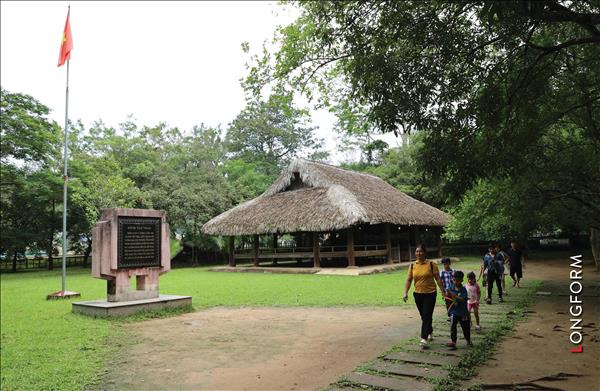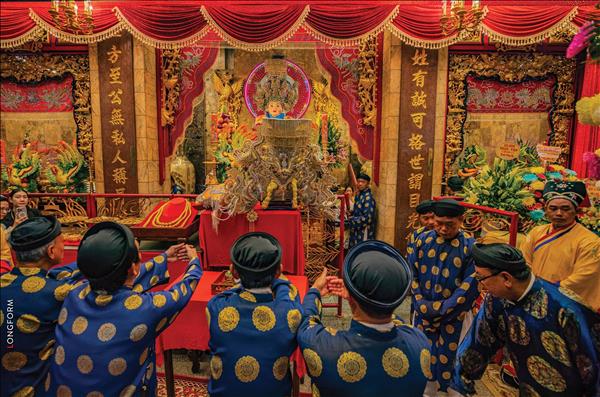Traditional Dao wedding
| North westerners have a saying “The Mong live on clouds, the Thai, on water and the Dao, on fire” which shows the characteristics of these ethnic groups. The Mong live in cloudy mountainous areas, the Thai live near rivers and springs, and the Dao have many fire-related customs and practices such as le cap sac and le nhay lua (fire jumping ceremony). |
“The Dao believe when a bride goes to her husband’s family, she will bring fortunes with her. Therefore, there must be important ceremonies to take her to her new family,” Chao Duon Liem told us while inviting us to have a cup of liquor with him. The ceremonies he mentioned are proposing, escorting the bride to her husband’s home, and welcoming her there.
The ceremony to welcome Chao San’s bride, Tan May, was held early in the morning on the date carefully selected by Chao Duon Liem. At the chosen time, Tan May was accompanied by shaman Liem, the wedding master, to the altar of her husband’s family to bow to his ancestors. She then greeted her parents and parents-in-law before meeting her groom Chao San who came out from his room in the costume of a Red Dao woman with a scarf covering half of his face. This unique costume of the groom originated from the legend of the formation of the Dao.
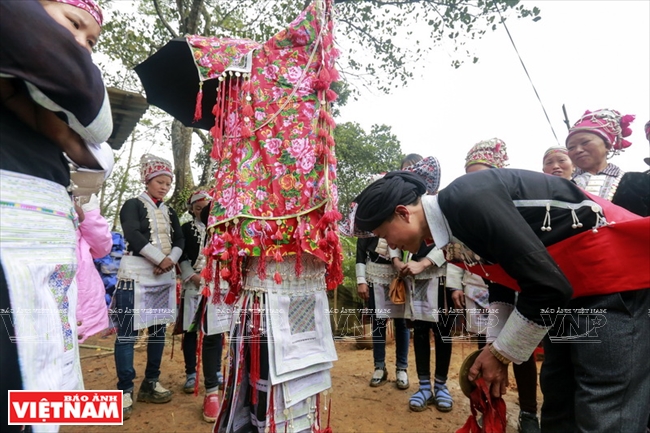 According to Dao custom, the groom is not present in the bridal procession but in return, many wedding formalities showing his family’s respect for the bride are held at the groom’s home. 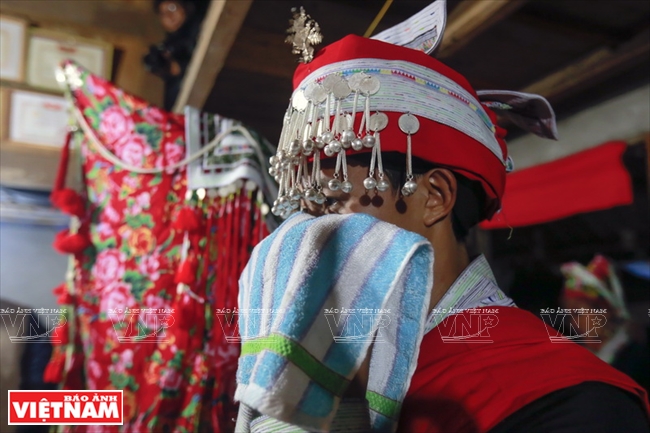 Under Dao custom, the groom must wear a woman’s costume with a scarf covering his face. 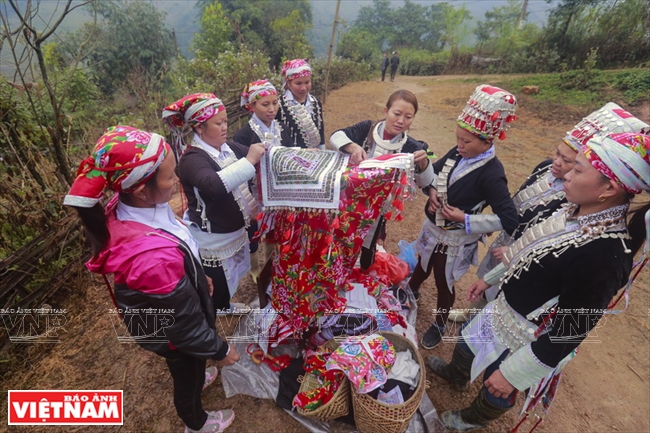 When about to reach the groom’s home, the procession from the bride’s family stops for the bride to have her Dao bridal costume put on. 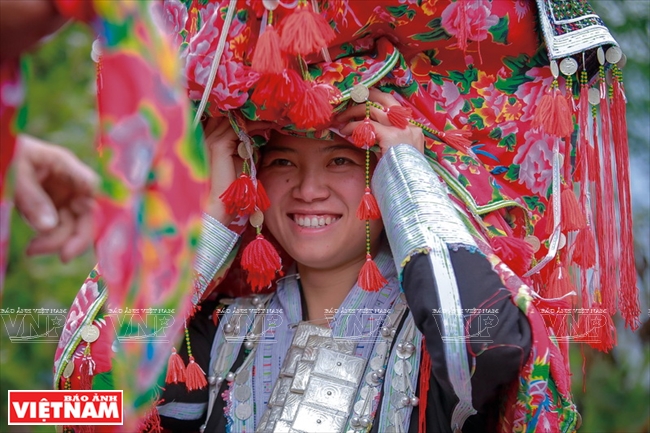 Happy smile of bride Tan May on her wedding day. 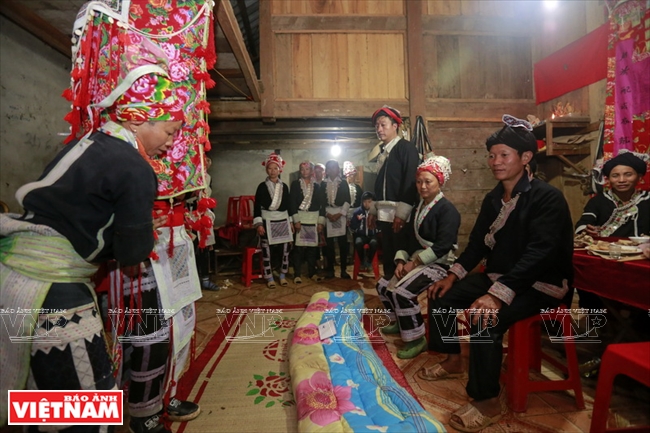 The ceremony for the bride to bow in front of the ancestor altar of her new home and greet her parents-in-law is held at midnight. Only after this ceremony may she become a new member of her husband’s family. 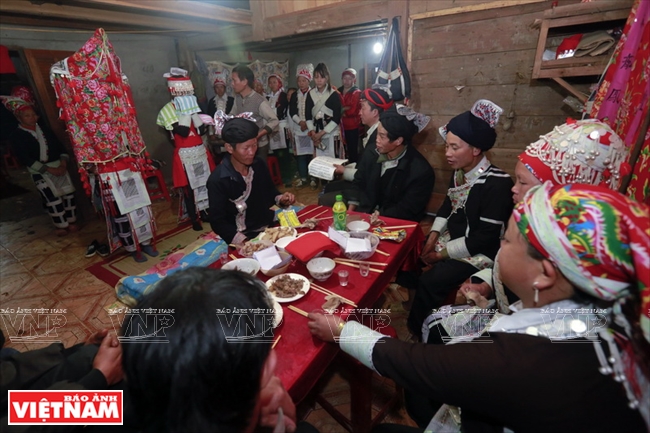 At the night of wedding ceremony, the families of the bride and groom have a meal together during which they sing songs telling about their origin for better mutual understanding. |
In the presence of the two families and the ancestors as believed by the Dao, Tan May and Chao San drank liquor together and listened to Chao Duon Liem’s advice on the life of marriage as the master of the wedding.
Closing the ceremony, Tan May washed the faces of the shaman and her parents and parents-in-law. With melodious music in the background, the bride’s family said good bye to the groom’s, leaving for home with a thank-you gift from their son-in-law, which included pork, sticky rice and liquor.
The original ceremonies in the wedding of Chao San and Tan May reflect a Dao family’s respect for its daughter-in-law, the new member believed to bring the best luck to the family.
Le cap sac, occult religious practice of the Dao
Le cap sac (maturity ritual), is very important for a Dao man to become a real descendant of Ban Vuong (the forefather of the Dao), who can understand common sense and is able to meet his ancestors after his death in Duong Chau, the Dao’s ancestral land. Only when passing le cap sac is a Dao man considered to be mature.
| The Red Dao’s legend has it that in the year of Tiger, Bat Xat forests and mountains were heavily flooded. A big falcon appeared, taking a couple to Lao Than Mountain to avoid floods. The couple got married and had twelve children who lived around this mountain, becoming the ancestors of 12 family lines of the present Dao in Bat Xat. Le cap sac with twelve lamps, which represent 12 lines of the Dao, offers the group a chance to pay tribute to its ancestors. |
Le cap sac is divided into three levels: three lamps, seven lamps and twelve lamps, which means the number of lamps the person passing the ritual is granted. Those passing the rituals with seven and twelve lamps can become a sorcerer.
As instructed by Chao Duon Liem, we visited Ky Cung Ho village in Tong Sanh commune to attend a le cap sac of the highest level where twelve lamps were granted to the involved men.
Chao Tu Quay, a shaman in Ky Cung Ho, told us that for the last 100 years, only two twelve-lamp le cap sac had been held in the area so we were lucky to see one of them.
Chao Phin Nhan, the host of le cap sac in Ky Cung Ho village, said his family annals showed that the latest le cap sac of this highest level was held about a century ago.
To hold the ceremony, Chao Phin Nhan’s family had to set up an altar dedicated to the Jade Emperor and another to Ban Vuong. For four consecutive days while le cap sac was held, all participants in the ceremony, including guests, had to fast.
From faraway Trung Chai commune in Sapa district, Ly Sao San and his wife came to Ky Cung Ho to attend this important ceremony. “Only by passing this ceremony, can we be recognized as descendants of Ban Vuong and still be husband and wife after our death,” San said.
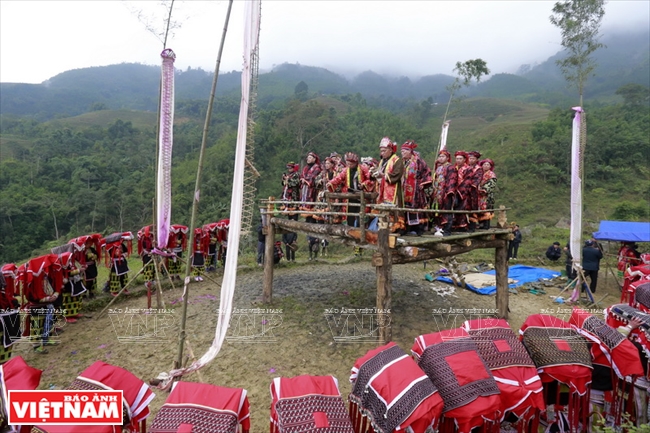 Shamans conduct a ritual dedicated to the Jade Emperor before granting le cap sac to Red Dao men. 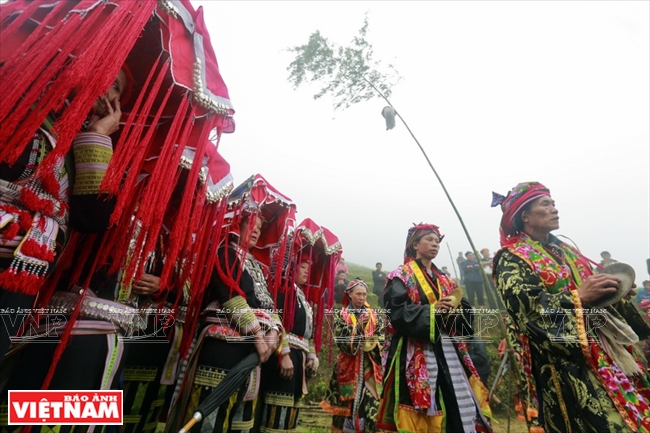 Only at a twelve-lamp le cap sac may a Red Dao woman be granted lamps. 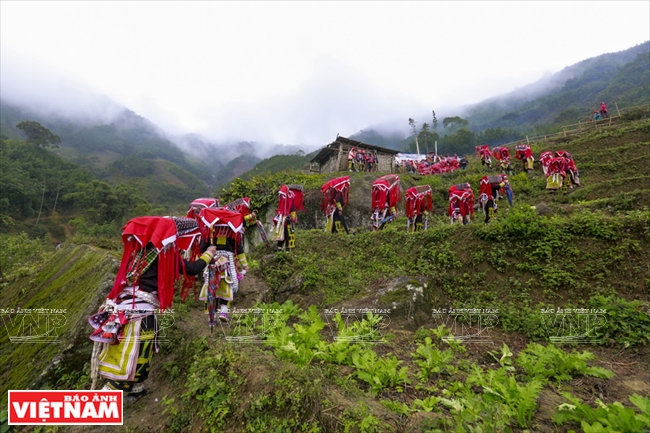 Twelve-lamp le cap sac is a sacred ceremony for the Red Dao. 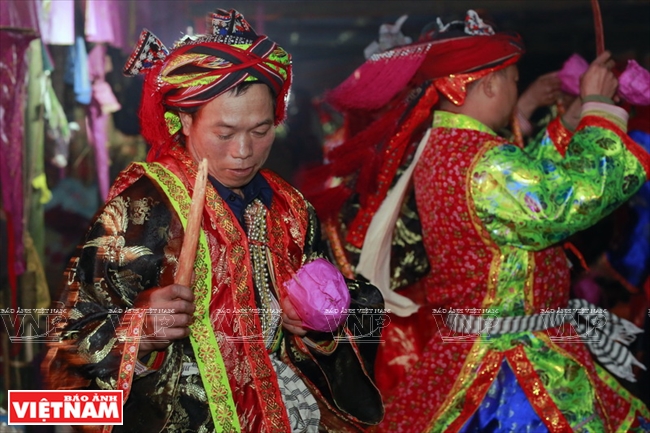 For three days during le cap sac, the men have many formalities, including dividing incense sticks and performing the turtle dance. 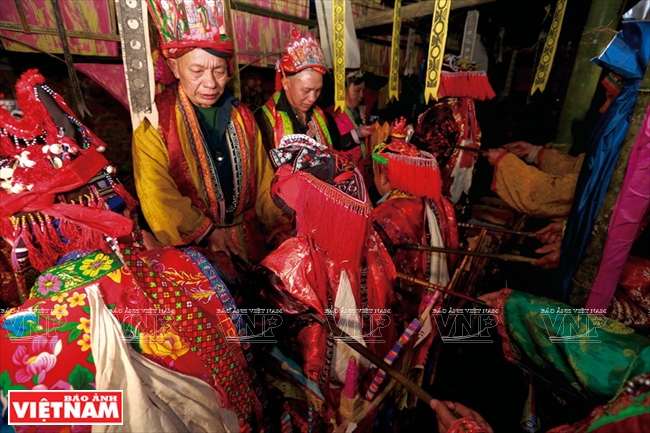 Mysterious rituals conducted by shamans during le cap sac. 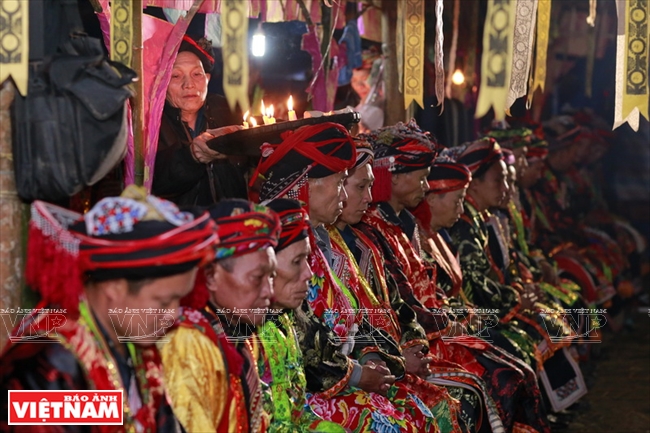 Lighting 12 candles on the heads of the men receiving le cap sac is one of the important formalities conducted by shaman during the ceremony. 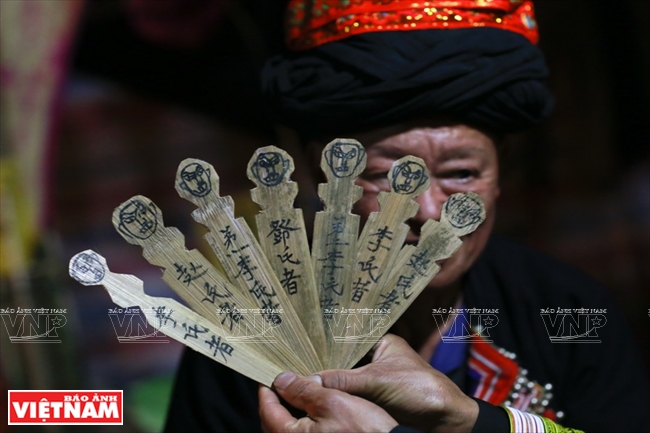 The twelve-lamp le cap sac can also be held for those having died who are symbolized by small bamboo dummies written with their names and birth dates. 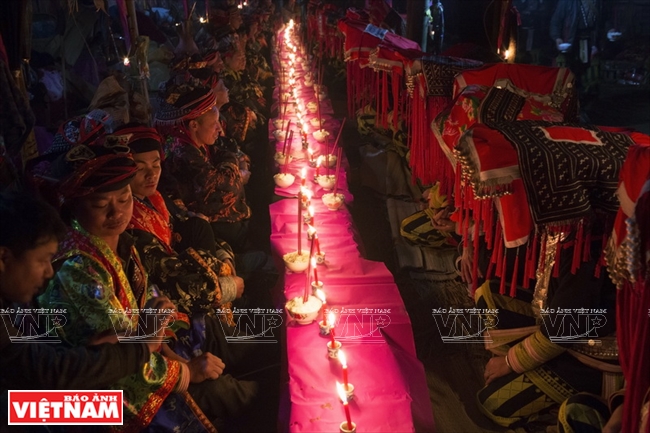 A wedding ceremony is collectively held for couples receiving le cap sac. 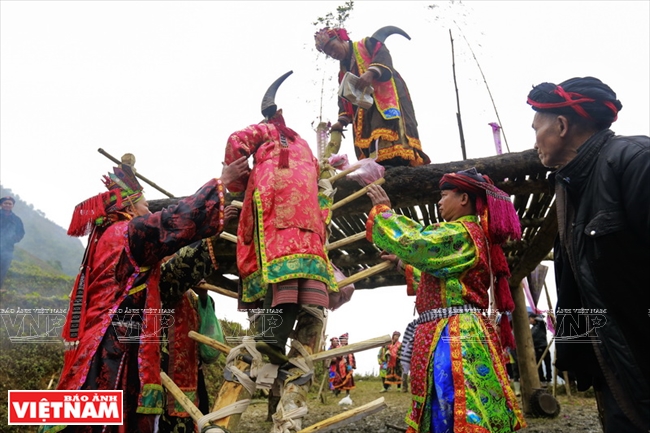 To pass le cap sac, the men must overcome numerous challenges such as climbing knife-blade stairs and running over fire. 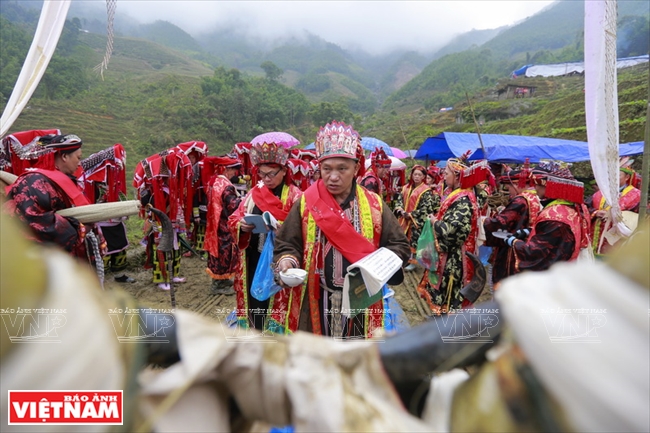 The final formality of le cap sac in front of the Jade Emperor altar which is burnt when the ceremony closes. |
During this ceremony, which was conducted by 18 shamans, the men for whom le cap sac was held called the shamans their masters. The masters instructed their students how to perform the formalities known only by the former.
To be granted 12 lamps in le cap sac, a man must walk on knife blades, run over fire and red-baked bricks and ploughshares to show his courage and loyalty. The night before le cap sac, the masters took their students to a forest, preaching to them about the morality of being human. They also held a ceremony in which 12 lamps were lit, symbolizing 12 stars in the space which enlighten the students’ souls and get rid of all their sins.
On the fourth day of le cap sac, in front of the Jade Emperor altar, the masters held a ritual to grant lamps to their students and recognize them as mature men.
Joining us in le cap sac in Ky Cung Ho village was Maharaux Alain, a French cultural researcher, who was very impressed by the deep humanity of this ceremony. He was also attracted by the sophisticated silver jewelry gracefully worn by Dao women in this ceremony, saying it was as if he was attending a silver wearing fashion show of the Dao.
Silver jewelry for a blessed ritual
A requisite present a Dao bride will receive from her husband’s family is a set of silver jewelry which she will wear on her wedding day.
At the market held every Sunday in Muong Hum commune, we met Tan Kin Hien, an artisan known in Bat Xat for his beautiful silver jewelry made for Dao brides.
We followed Hien from Muong Hum market to his home in Seo Po Ho village in Muong Hum commune to see how the beautiful jewelry of Dao brides was made.
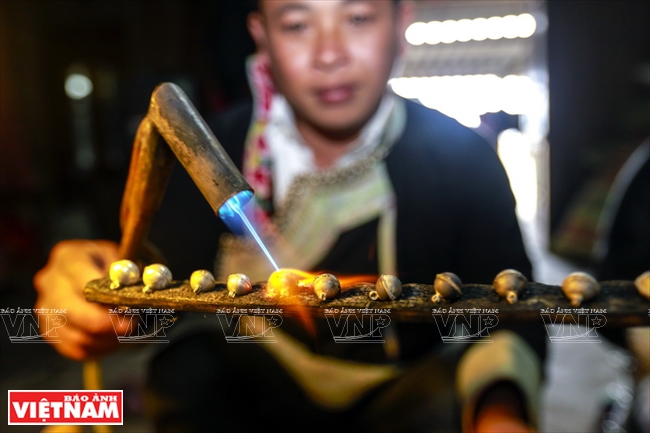 Sophisticated silver buttons are made with the skilled hands of the Dao in Muong Hum. 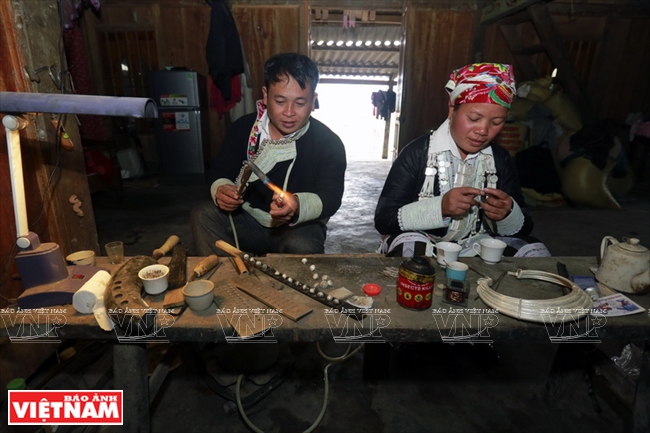 Many families in Muong Hum keep the Dao’s traditional craft of making silver jewelry for sacred rituals. 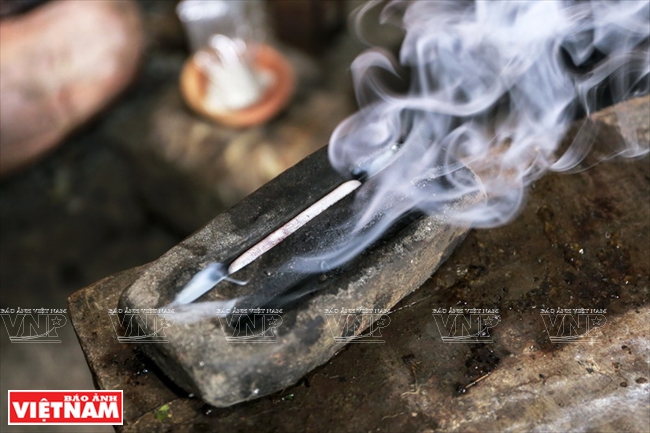 Casting silver into bars before making jewelry. 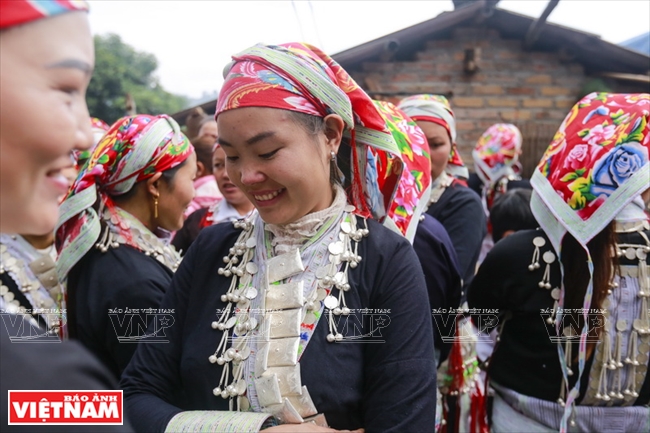  . . 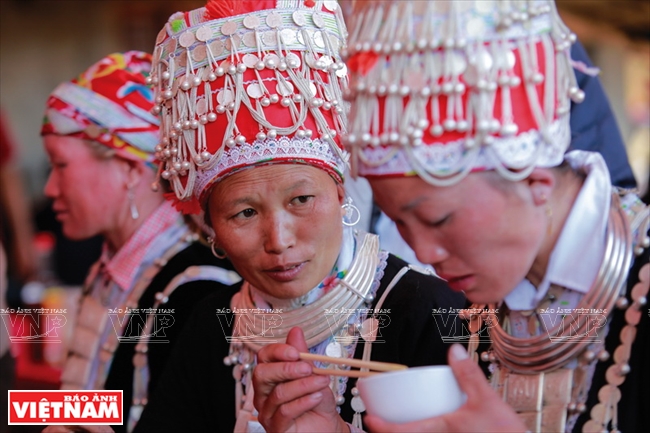 Delicate details of silver jewelry on the costume of Dao women in Bat Xat. |
Tan Kim Hien and his wife have been making bridal silver jewelry for nearly 20 years. For the Dao, silver jewelry not only beautifies a bride but shows the wealth of her husband’s family and their love for her. A set of silver jewelry costs between 40 and 50 million dong (roughly 1,800 – 2,300 US dollars) and even as high as 100 million dong.
The material for Hien to make silver jewelry is pure silver brought from the state bank or silver bars bought from villagers. His tools include bellows, a silver-baking stove, silver-fiber making devices, iron anvils, molds, scissors, pliers and carving knives.
Despite the presence of jewelry made with modern technology, the Dao in Bat Xat prefer traditional silver products made by the skilled hands of artisan Tan Kim Hien.
Story: Tran Hieu - Photos: Viet Cuong



